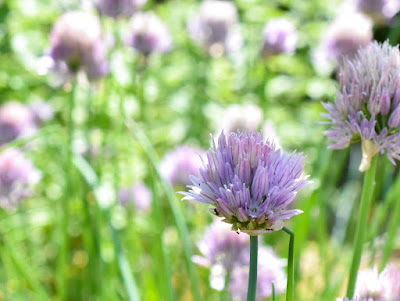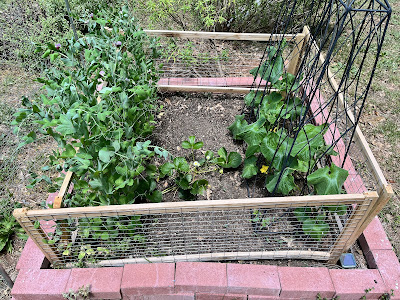As I was inspecting my garden this week, I noticed my pea plants were looking a little stressed. I wondered whether I had been watering them enough in the 96-degree weather we had been having.
 |
| My peas snuck up on me! They were just flowers a few days ago. |
 |
| The plants look pretty good all told, but they could be better. |
All in all, they were doing better than I imagined after getting a late start planting them. Peas love the cool, wet weather of early spring. A hot, dry week is not their thing. But something else was off.
After picking my first harvest of peas, I took a closer look. The mottled look of some of the green leaves told me leaf-sucking insects were around.
I flipped a few leaves over, and sure enough I had red spider mites. A quick Google told me that plants are more susceptible to damage from spider mites when they don’t get enough water, so in a sense I was right about the dry weather making them unhappy.
 |
| Pea leaf with several spider mites--some of the yellowed leaves had twice that many! |
Now some people reach for the insecticide at this point, but instead I went to the Internet to see what one of the cooperative extension service publications said about managing red spider mites. One of the first suggestions was washing the leaves, which is an old trick that I remember my grandfather used (he was a Master Gardener). It doesn’t kill them, but it temporarily removes them, makes it harder to stick around, and puts them where ground predators can reach them. At least it made me feel better.
 |
| The same leaf after spraying the mites off with a hose. |
Overall, though, my garden has been doing fairly well this week. The zinnias sprouted, my cucumbers are getting huge, my potatoes are looking healthy, and I have my first baby tomato.
 |
| Zinnia seedlings |
 |
| Little baby cherry tomato |
 |
| I think my cucumber vines doubled in height in the past week. |















